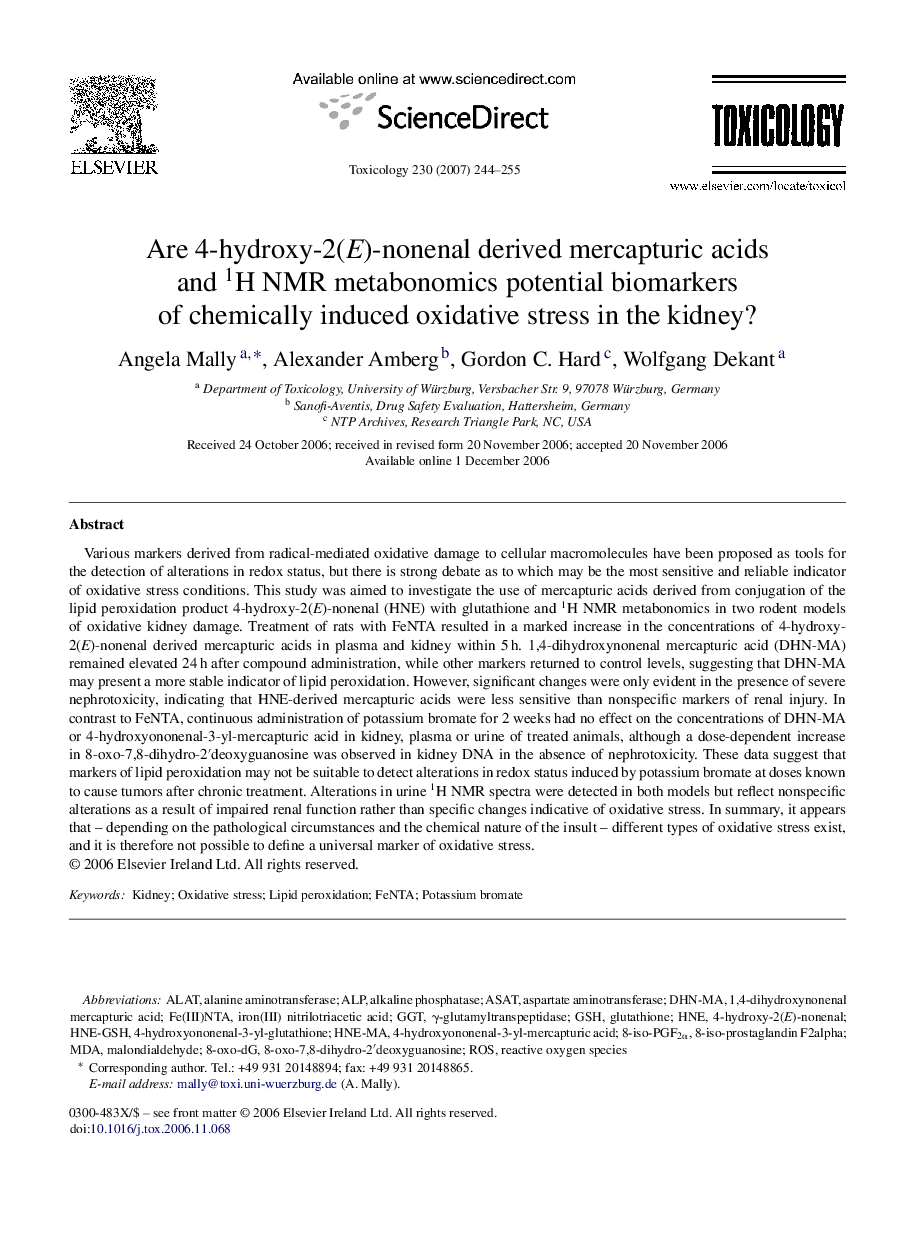| Article ID | Journal | Published Year | Pages | File Type |
|---|---|---|---|---|
| 2598061 | Toxicology | 2007 | 12 Pages |
Various markers derived from radical-mediated oxidative damage to cellular macromolecules have been proposed as tools for the detection of alterations in redox status, but there is strong debate as to which may be the most sensitive and reliable indicator of oxidative stress conditions. This study was aimed to investigate the use of mercapturic acids derived from conjugation of the lipid peroxidation product 4-hydroxy-2(E)-nonenal (HNE) with glutathione and 1H NMR metabonomics in two rodent models of oxidative kidney damage. Treatment of rats with FeNTA resulted in a marked increase in the concentrations of 4-hydroxy-2(E)-nonenal derived mercapturic acids in plasma and kidney within 5 h. 1,4-dihydroxynonenal mercapturic acid (DHN-MA) remained elevated 24 h after compound administration, while other markers returned to control levels, suggesting that DHN-MA may present a more stable indicator of lipid peroxidation. However, significant changes were only evident in the presence of severe nephrotoxicity, indicating that HNE-derived mercapturic acids were less sensitive than nonspecific markers of renal injury. In contrast to FeNTA, continuous administration of potassium bromate for 2 weeks had no effect on the concentrations of DHN-MA or 4-hydroxyononenal-3-yl-mercapturic acid in kidney, plasma or urine of treated animals, although a dose-dependent increase in 8-oxo-7,8-dihydro-2′deoxyguanosine was observed in kidney DNA in the absence of nephrotoxicity. These data suggest that markers of lipid peroxidation may not be suitable to detect alterations in redox status induced by potassium bromate at doses known to cause tumors after chronic treatment. Alterations in urine 1H NMR spectra were detected in both models but reflect nonspecific alterations as a result of impaired renal function rather than specific changes indicative of oxidative stress. In summary, it appears that – depending on the pathological circumstances and the chemical nature of the insult – different types of oxidative stress exist, and it is therefore not possible to define a universal marker of oxidative stress.
